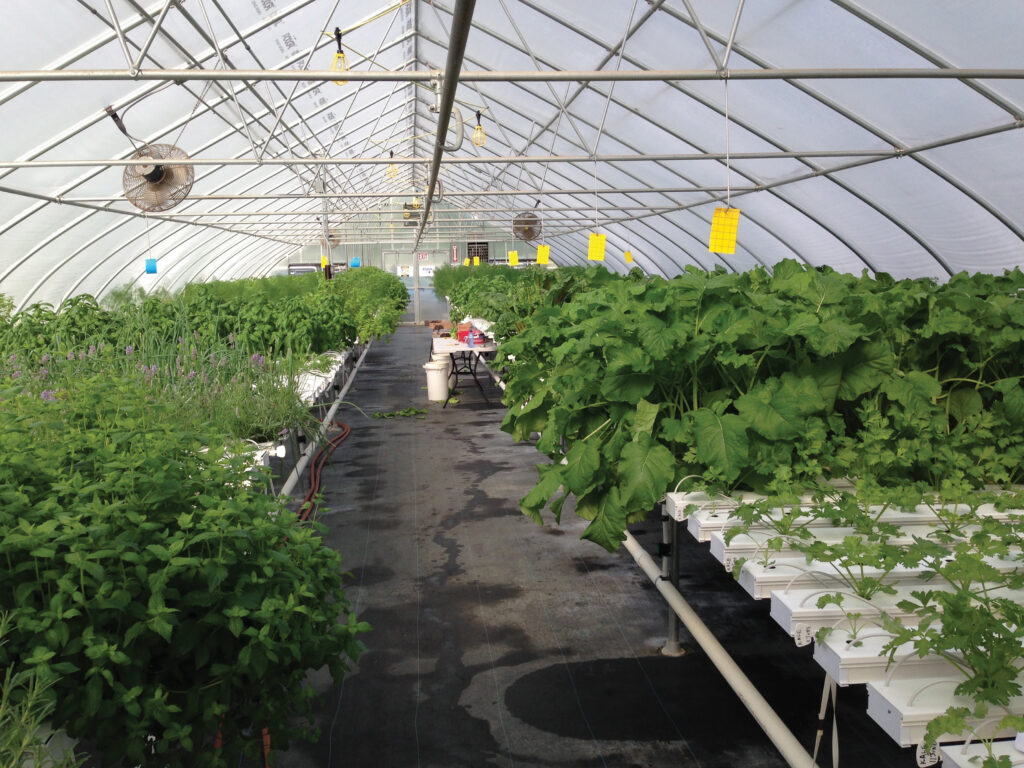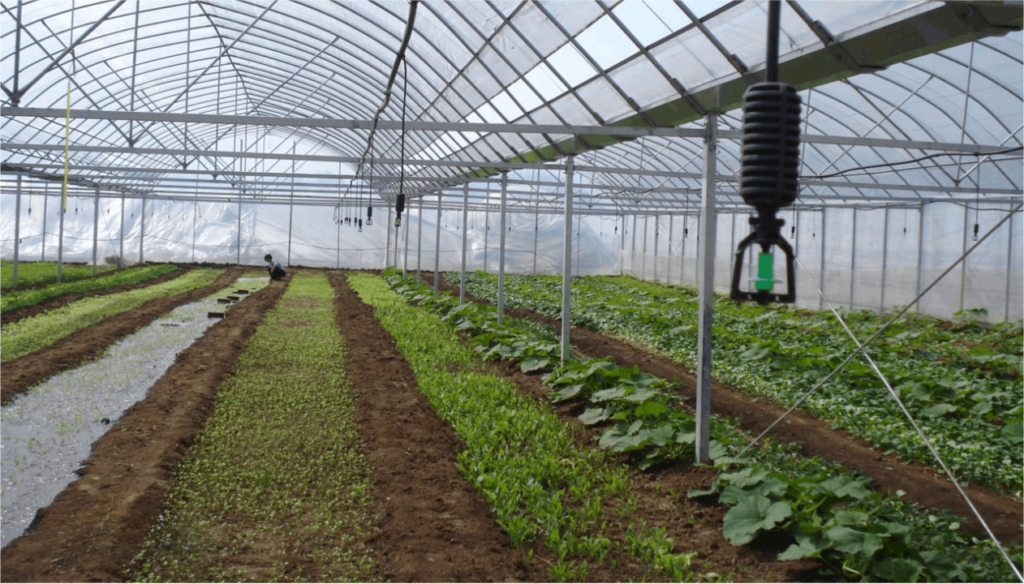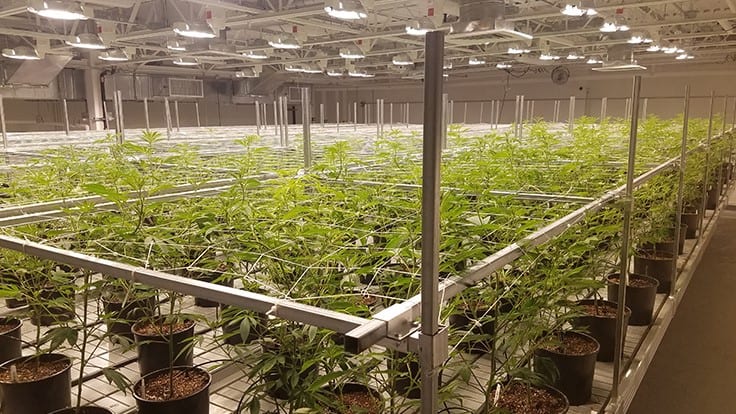A fertigation system in a greenhouse combines irrigation with fertilization, delivering nutrients to plants via the irrigation system. It involves a fertilizer injector that blends fertilizers into the water supply, controlling the amount and frequency of nutrients delivered to plants. This method ensures precise and uniform distribution of nutrients, enhancing efficiency and saving time compared to manual fertilization. The system’s automation allows for tailored nutrient delivery based on plant needs, potentially increasing crop yield and quality.
Factors like plant type, nutrient requirements, water quality, and system maintenance are pivotal for effective implementation and optimal plant growth. Fertigation stands out for its ability to provide plants with essential nutrients in a controlled and efficient manner, contributing to healthier and more productive greenhouse crops.
How are Greenhouse Fertigation System Components Defined?

A greenhouse fertigation system combines irrigation (watering) with fertilization (the application of nutrients) in a controlled environment, such as a greenhouse. The components of a greenhouse fertigation system can be defined as follows:
Water Source
This is the primary input for the system. It could be from a municipal water supply, a well, a collected rainwater reservoir, or any other water source suitable for greenhouse use.
Fertilizer Injector
This component is crucial as it injects the desired nutrients into the water supply. It could be a proportional injector that delivers a consistent ratio of fertilizer to water or a venturi injector that uses water flow to create a suction, pulling in the fertilizer.
Fertilizer Tanks or Containers
These hold the concentrated fertilizers or nutrient solutions. They can vary in size and number depending on the scale and complexity of the fertigation system.
Pumps and Valves
These control the flow of water and fertilizers. Pumps help move the water and nutrients through the system, while valves regulate the flow and direction of the solution.
Distribution System
Pipes, tubes, and irrigation lines carry the water-nutrient mixture to different sections of the greenhouse. This system ensures even distribution to the plants.
Controllers and Sensors
These are electronic devices that monitor and regulate the system. They might include pH sensors, EC (electrical conductivity) meters, moisture sensors, and timers that control the release of water and nutrients based on predefined parameters.
Filters and Mixers
Filters are used to remove any debris or particles that might clog the system. Mixers can be employed to ensure a homogeneous blend of water and fertilizers.
Nozzles or Emitters
These are the endpoints of the distribution system and deliver the water-nutrient mixture directly to the plants. They can be in the form of drip emitters, micro-sprinklers, or other types of irrigation heads.
Monitoring and Control Software (optional)
Advanced systems might have software that allows remote monitoring and control of the fertigation process. This can enable precise adjustments based on real-time data.
These components work together to create a controlled and efficient system that delivers the necessary nutrients to greenhouse plants, promoting healthy growth while conserving water and minimizing waste.
The setup and selection of these components can vary significantly based on the specific requirements of the greenhouse, the types of crops being grown, and the available budget for the system.
What Improvements Does Fertigation Offer in Greenhouse Crop Cultivation?
Fertigation offers several improvements in greenhouse crop cultivation compared to traditional methods of separate irrigation and fertilization. Some of the key advantages include:
Precision and Efficiency
Fertigation systems in greenhouse crop cultivation enable precise control over water and nutrient delivery, optimizing the supply for maximum plant uptake. This precise management reduces waste, conserves resources, and ensures plants receive the correct amounts of nutrients at the right times, thereby enhancing overall efficiency.
Uniform Distribution
One of the significant advantages of fertigation is its ability to uniformly distribute nutrients throughout the entire crop. This distribution fosters consistent growth and development, particularly vital in greenhouse settings where plants are often grown in containers or hydroponic systems, necessitating consistent nutrient availability for healthy and uniform plant growth.
Reduced Labor and Costs
By automating the delivery of nutrients and water, fertigation systems reduce the need for manual labor, leading to cost savings over time. This automation streamlines the fertilization process, minimizing labor requirements and associated expenses.
Optimized Nutrient Uptake
Fertigation’s method of delivering nutrients in a dissolved form directly to the root zone significantly enhances nutrient uptake by plants. Immediate availability of nutrients to the roots promotes better growth, increased yield, and higher-quality produce.
Environmental Sustainability
Fertigation contributes to environmental sustainability by minimizing the risk of nutrient runoff and leaching. By precisely applying nutrients, these systems reduce excess fertilizers entering soil or water bodies, thereby decreasing environmental pollution.
Flexibility and Adaptability
These systems offer flexibility in adjusting nutrient concentrations and schedules based on specific plant requirements, growth stages, or changing environmental factors. This adaptability allows growers to fine-tune fertilization for optimal plant health and performance.
Improved Crop Management
Fertigation systems equipped with monitoring and control capabilities enable growers to closely monitor parameters such as pH, EC, moisture levels, and nutrient concentrations. This information facilitates informed decision-making for better crop management and real-time adjustments.
Higher Crop Yield and Quality
Well-managed fertigation systems often result in increased crop yields and improved produce quality. Plants receiving optimal nutrients and water are healthier, more resilient, and less prone to diseases and deficiencies, leading to a superior harvest.
How is a Greenhouse Fertigation System Established?

Establishing a greenhouse fertigation system involves a systematic process to ensure its effective setup and functionality. The process begins with an assessment of the specific requirements and planning the design. This entails understanding the nutrient needs of the crops intended for cultivation, evaluating the quality and quantity of the available water source, and planning the system design considering factors such as greenhouse layout, irrigation methods, types of nutrients required, and necessary equipment.
Once the requirements are assessed, the next step involves selecting the appropriate components for the fertigation system. This includes choosing the type of fertilizer injector system, selecting tanks, pumps, valves, filters, and deciding on controllers, sensors, and monitoring equipment for precise control and automation.
Following component selection, the installation of infrastructure is crucial. This includes setting up the water distribution system by installing pipes, tubes, and irrigation lines throughout the greenhouse. Fertilizer injection equipment such as injectors, tanks, pumps, valves, filters, and mixers need to be strategically placed and connected. Additionally, controllers and sensors must be installed and configured according to the greenhouse layout and specifications.
Preparing nutrient solutions is a critical step, adhering to recommended guidelines and safety protocols to accurately mix fertilizers with water, creating appropriate nutrient solutions. Calibration of equipment is essential to ensure accurate delivery of nutrients and water. Comprehensive system testing is then conducted to confirm proper functionality, including checks for leaks and verifying the correct distribution of water and nutrients.
Operational procedures are implemented once the system is set up and tested. This involves establishing a fertigation schedule based on crop growth stages and specific needs, and continuously monitoring the system using sensors and controllers, making necessary adjustments to nutrient concentrations or irrigation schedules as required.
Training greenhouse staff in operating, maintaining, and troubleshooting the system is essential. Routine maintenance protocols are established for cleaning, servicing, and replacing components to ensure optimal system performance. Continuous monitoring of plant health, nutrient levels, and system performance is crucial, allowing for adjustments to system parameters based on observations and collected data to optimize crop growth and resource utilization.
FAQ’s
What fertilizer is used in greenhouses?
Various types of fertilizers are used in greenhouses, including water-soluble fertilizers, granular fertilizers, and controlled-release fertilizers.
What are the methods of the fertilization system?
Fertilization systems in greenhouses can include drip irrigation, overhead irrigation, fertigation (combining irrigation and fertilization), and topdressing.
What is the best fertilizer for greenhouse seedlings?
The best fertilizer for greenhouse seedlings often contains balanced nutrients with a higher ratio of phosphorus to promote root development and overall growth.
What is used in many fertilizers in a greenhouse gas?
Many fertilizers used in greenhouses contain nitrogen, phosphorus, and potassium (N-P-K), essential nutrients for plant growth, rather than greenhouse gasses.
What is the best fertilizer for green vegetables?
The best fertilizer for green vegetables depends on specific nutritional needs but generally includes balanced formulations rich in nitrogen, phosphorus, and potassium, along with micronutrients.
What are organic fertilizers for greenhouses?
Organic fertilizers for greenhouses include compost, fish emulsion, seaweed-based fertilizers, and other natural products derived from organic sources, providing nutrients in a more sustainable manner
Final Words
Creating a greenhouse fertigation system involves planning, choosing equipment, and setting it up. First, understand what plants need and check the water. Then, pick the right tools like pumps and pipes.
Put everything together and test it. After that, follow a schedule, keep an eye on the system, and teach others how to use it. Don’t forget to take care of it regularly. Doing all these things helps plants grow well and gives better crops in the greenhouse.

